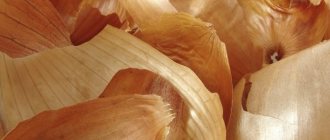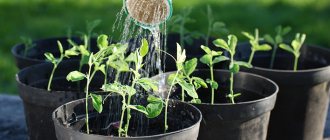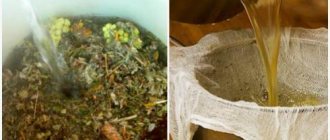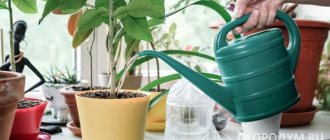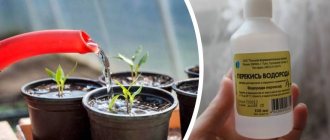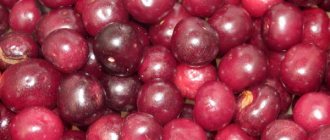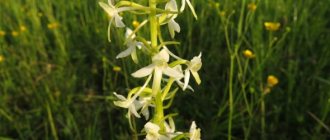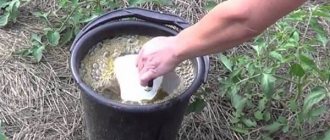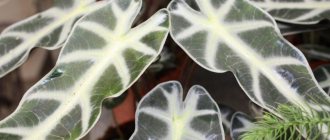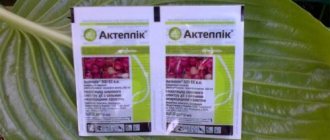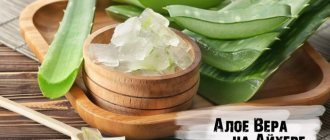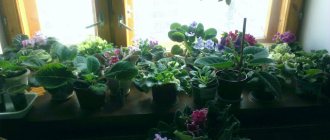Iodine is needed not only by the human body, but also by all plants. With a lack of this element, the ovaries rot and fruiting is delayed. But feeding plants with iodine must be carried out according to strict rules and the dosage must be observed.
In the garden, vegetable garden and flower garden, iodine is used not only as a fertilizer, but also as an insecticide. It also suppresses the development of viruses, bacteria and fungi. And this is not all the beneficial properties of iodine. When watering plants with iodine solution, the soil is disinfected and at the same time the immunity of the crops is strengthened.
General rules for using iodine
- Iodine is not used during plant dormancy.
- A pharmaceutical alcohol solution of iodine (5%) is used in microdoses. As a rule, only 1-2 drops are used per 2 liters of water . If you increase the concentration, you can burn the plants and destroy beneficial soil bacteria.
- Seedlings and seedlings are watered with iodine solution only after the plants have taken root in a new place and become stronger.
- Fertilizer should not fall on the root collar of the plant. And before you spill the soil with iodine solution (preferably warm!), the soil must be thoroughly moistened.
- To increase efficiency, it is recommended to add wood ash to the fertilizer at the rate of 1 part ash per 10 parts iodine solution.
- When foliar feeding, it is best to spray the iodine solution through a fine sprayer. From the resulting “fog,” the element is absorbed better by plants – by 65-90%.
Bottom line
Iodine for indoor and garden plants is an excellent growth stimulator and protector against fungal infections. It saves from powdery mildew, gray rot and late blight. This substance can also destroy pest larvae left in the ground. Medicinal solutions are prepared very carefully, since iodine compounds are dangerous in excess: they can destroy the root system and beneficial soil microorganisms.
Treatment and stimulation of flower growth differ from each other in the proportions of dilution of the alcohol tincture in water. Strengthening the immunity of flowers and seedlings is also carried out according to a certain scheme. Iodine disinfects the soil, protecting seedlings from attack by pest larvae and harmful bacteria. However, when watering indoor plants, you need to be careful: fertilizing is introduced only after the earthen ball has been moistened. If you pour iodine water under the roots of flowers in dry soil, you can harm the root system.
Application of iodine for vegetable seedlings
Feeding with iodine is especially good for tomatoes, cucumbers, eggplants, and peppers. To obtain friendly shoots and healthy seedlings, seeds are soaked for 6-8 hours in a solution prepared from 2 glasses of water and 1 drop of pharmaceutical iodine.
Before planting in open ground, seedlings are fed with iodine at the root only once. To do this, 1 drop of alcohol solution is diluted in 3 liters of water. Plants planted in the ground and grown up are watered with a solution prepared from 3 drops of iodine diluted in 10 liters of water. 1 liter is poured under each strong bush.
Feeding tomatoes with iodine
Grown plants need iodine supplements even more, as they run the risk of late blight. To protect tomatoes from this insidious disease, fertilizing with iodine and milk is used. Whey in a 10-liter bucket is diluted with water in a ratio of 1:10, 40 drops of iodine and 15 ml of hydrogen peroxide are added. The resulting solution is sprayed onto the bushes 3 times per season with an interval of 10 days. Processing is carried out in the evening.
You can protect tomatoes from late blight using another solution. 2 tbsp. The ash is dissolved in 2 liters of water and left for a week. Then this infusion is added to 8 liters of boiling water, mixed thoroughly and cooled. Then add 10 ml of an alcohol solution of iodine and 10 g of boric acid and leave for 12 hours. After this time, the resulting medicine is diluted with settled water (1:10) and watered at the root of each tomato bush.
To rid tomatoes of rot, the bushes are sprayed with an iodine solution several times a season (10 ml of pharmaceutical iodine is diluted in 10 liters of water).
Feeding cucumbers with iodine
Against powdery mildew, cucumber lashes are generously sprayed with a mixture of milk (1 l), water (9 l) and 5% iodine (10 drops). The soil under the plants is treated with the same product. The procedure is repeated once a week until the symptoms of the disease disappear.
Fertilizing strawberries with iodine
For garden strawberries (strawberries), iodine is an excellent growth activator. This remedy strengthens the immunity of overwintered bushes. To do this, in early spring, after the snow melts, the plantings are watered with pharmaceutical iodine (10 drops), dissolved in 10 liters of settled water. A total of 3 such feedings are carried out with an interval of 10 days. This procedure not only strengthens the plants, but also protects them from gray rot.
Feeding cabbage with iodine
To prevent cabbage from rotting and forming a large head of cabbage, it is watered at the root with the following composition: 40 drops of iodine are dissolved in 10 liters of water. For each plant, use 1 liter of solution. The same fertilizer can also be used for foliar feeding. But in this case, 5 drops of iodine are diluted in 10 liters of water.
Feeding restrictions
The optimal time for applying an iodine solution is the end of February, before the buds appear. It is prohibited to use iodine-based supplements in the following cases:
- After a recent transplant into another container. Green space must adapt and take root.
- The soil is unsuitable for use.
- If a flower crop has a painful appearance, then first you need to determine the cause and eliminate it, and then only apply the nutritional composition.
Iodine for feeding indoor plants undoubtedly brings only positive changes. Green plants delight their owners with flowering for a long time. The main thing is to adhere to the regime of adding the nutrient solution and not to overdo it with the dosage.
The use of iodine against pests
Garden insects are also afraid of Yoda. To destroy cockchafer larvae in spring and autumn, all perennial plants are watered at the root (not on the leaves) with an iodine solution (15 drops per 10 liters of water). Approximately 1 liter is used for each bush. If there are too many pests, then up to 5 liters of this product can be poured under an adult plant.
Against weevils, in early spring the soil is spilled directly over the snow with an iodine solution (1 tsp of iodine per 10 liters of water). And to combat aphids, plants are sprayed with 10% Farmayod.
Scientific facts about fertilizer
In open ground, iodine comes from precipitation, so crops growing outside receive this substance naturally, at least in small quantities. At home, you need to saturate the soil yourself. Scientific experiments were carried out, during which it turned out that with proper feeding, all indoor flowers reacted positively: the plants recovered faster from illnesses, the buds became more lush and beautiful, and the color of the leaves was brighter.
There is no exact explanation why iodine as a supplement gives such excellent results. Scientists have suggested that this element regulates the functioning of enzyme systems, thus improving metabolism in plants. But no matter how much controversy there is around feeding with this element, the fact is obvious: the benefits of this substance are enormous.
Iodine is able to “reanimate” plants even in the most hopeless cases. Research was carried out on indoor flowers infected with diseases. Here are some examples:
- The use of iodine as a fertilizer literally “extended the life” of anthurium. The plant had already lost all its leaves, but after several waterings with the solution, recovery occurred. After just a couple of months, the anthurium became a healthy, beautiful flower with lush green leaves.
- Red raised spots appeared on the leaves of gladiolus and snapdragon. The fungus has already spread throughout the entire stem. The use of iodine saved the flowers from death; not a trace of “rust” remained.
- An experiment was conducted with chrysanthemums affected by nematodes. Feeding flowers helped get rid of harmful parasites.
Iodine also has a positive effect on garden crops as a fertilizer. There was a significant increase in the number of fruits, as well as an improvement in their taste.
The use of iodine for indoor flowers
Houseplants also love iodine. To prolong flowering and improve its quality, 1-4 drops of pharmaceutical iodine are diluted in 1 liter of water and watered under the root. If the flower loses its attractiveness, add 1 drop of iodine to the complex fertilizer (per 3 liters of water) and water the plant 3-4 times with an interval of 10 days.
To strengthen the immune system, water home flowers with a solution (1 drop of iodine per 1 liter of water) 3 times with an interval of 10-14 days. To save a weakened rose, Humate 7 is diluted in water and iodine is added (1 g per 10 liters of water). 50 ml of the resulting solution is poured under each indoor rose.
It turns out that iodine is not the only remedy in the home medicine cabinet that can be used to feed and protect plants. Find out what other medications can be used to improve the condition of green pets in the article Medicines for people - first aid for plants.
Bioiodis
This is a preparation based on iodine compounds, intended for the care of indoor flowers. It contains vermicompost, beneficial bacteria, and spores of beneficial phytofungi. The use of the drug ensures rapid development of seedlings, abundant flowering and absence of diseases.
How is the drug used? When replanting, you need to soak the flower roots in the solution (according to the instructions). The leaves are also sprayed and watered with a liquid solution. Together with the drug, you can use ash water or activated carbon powder.
Common Mistakes
Unfortunately, newcomers to agriculture make mistakes. They concern both dilution (non-compliance with doses) and treatments.
You can avoid them if you remember:
- It is not recommended to treat polycarbonate with iodine. The material in combination with iodine liquid is capable of releasing harmful substances.
- An antiseptic bought at a pharmacy will only help as a preventive measure. If the infection with a fungus or other disease is extensive, then serious treatment with special drugs is required. And use iodine to enhance their effect.
- Make sure there is no excess iodine. Over the entire growing season, 2-3 treatments with the selected product are sufficient. Otherwise, the fruits will have an increased concentration of the drug. This will have a negative effect on the human body.
Beneficial features
Do not think that iodine affects humans and plants differently. All living things will react equally to micro- and macroelements, infections or bacteria. Therefore, the alcohol infusion will be useful for all crops, including flowers.
Substances that, in the composition of the drug, have a beneficial effect on life activity and the course of physiological processes. Their task was to take an active part in photosynthesis and the synthesis of individual amino acids and proteins. In addition, iodine is a bactericidal substance and a natural antiseptic.
From time immemorial it has been called a cure for fungus not only on the hands or nails, but also for the spores that infect the plant:
- powdery and downy mildew;
- late blight;
- all types of rot.
It is noted that the addition of iodine infusions affects the normalization of development and growth, the appearance of buds and ovaries. The best responses to feeding such products are:
- lawn grass and greenery;
- sunflowers and corn;
- cabbage of all types and bulbous plants;
- beets and eggplants;
- cucumbers and tomatoes;
- potatoes, strawberries/strawberries;
- garden and home flowers.
It is especially good if you soak the seed material before germination. The product stimulates it, neutralizes pathogenic microorganisms (if any), and at the seedling stage increases immunity.
When applied during the growing season, they can be used for prevention and treatment. As a bonus, get better flowering, a large number of ovaries and fruits.
For seeds instead of potassium permanganate
with iodine . This is one of the most effective ways to use it, which, among other things, accelerates the emergence of seedlings.
Treatment is carried out immediately before sowing. The seed is soaked for two to three hours in a five percent iodine diluted in the proportion of a drop per liter. After processing, the seeds are not washed, they are allowed to dry a little and placed in the ground.
To disinfect potato tubers, place them evenly, in one layer, on film. Then prepare a solution based on
- 2 milliliters;
- a bucket of water .
Generously spray the potatoes with it.
Reviews
I don’t really want to use chemicals to work in my own garden, regardless of whether they are pharmaceutical or industrially produced. Although if you look at it, if you use biological products manufactured at specialized enterprises, then you don’t need any chemicals. And iodine, in my opinion, is not a very effective remedy.
Anton, 43 years old, Vichuga
I want to confirm that after treating cabbage beds with iodine, I have no problems growing it. There are no aphids or whites. The heads of cabbage are normal, without damage or stains. In addition, I can offer a recipe for using iodine to treat young cucumber sprouts. To prevent their leaves from turning yellow, they need to be sprayed with a mixture of 30 drops of iodine, 1 liter of whey and 20 g of laundry soap, grated and dissolved in a glass of water. All substances are poured into a bucket of water. I spray the leaves 2 times every 10 days, early in the morning, after watering the cucumber bushes.
Marina, 34 years old, Bataysk
Everyone who is engaged in vegetable growing will inevitably someday be faced with the choice of what to use to feed the plants, what to give preference to? It is possible that not everyone takes on faith what they read about on the pages of newspapers and on the blogs of amateur gardeners. But you still need to check how their advice works, at least once. And only then draw the appropriate conclusions.
Health to you and your loved ones! Natalya Belokopytova.
Indoor plants not only decorate the interior of a room, but also bring significant benefits to humans. These green “healers” absorb a significant amount of harmful substances from the air and enrich it with oxygen, which has a positive effect on a person’s overall well-being. To protect home flowers from diseases and preserve their natural beauty, various fertilizers are used. Experienced gardeners recommend using iodine for indoor plants for additional feeding. This element promotes abundant flowering and more intensive development of vegetation.
The best iodine flower nutrition recipes
It is recommended to water indoor flowers with iodine using a solution, for the preparation of which 1-2 drops of alcohol tincture and 2 liters of water were taken. There are enough advantages of such feeding: intensive growth rate, abundant flowering and increased immunity in indoor plants. But the procedure itself must be carried out carefully so as not to harm green spaces. The working fluid should be poured around the perimeter of the flowerpot, avoiding contact with the root collar. The optimal consumption per plant is 50 ml of diluted iodine.
Instead of water, it is good to use ultra pasteurized milk. Alternatively, you can make a solution of 1 drop of iodine, ½ liter of milk and 2.5 liters of water.
To quickly restore rose bushes, use an iodide solution at the rate of 7 drops of pharmaceutical product and sodium humate, prepared according to the instructions. To treat ornamental crops, it is effective to prepare a working liquid from 2-3 drops of the main product and 3 liters of water.
For weakened geranium, a solution of 1 drop of iodine and 3 liters of settled water is suitable. Feeding is applied at the root, but the soil must first be moistened with clean water. To feed violets and Saintpaulias, a similar composition is prepared; exceeding the dosage here is detrimental to the flower itself (it will not be able to cope with highly concentrated liquid). The first procedure is carried out 3 months after transferring the plant to another container, and the next one – after 10 days. This scheme is applied 1-3 more times.
Regardless of the type of flower crops, 5% iodine is used to prepare the working solution
It is better to carry out feeding procedures in the summer, maintaining an equal interval between treatments. The water should be soft, settled (for 2-3 days), at room temperature.
When and why do you need to feed a plant?
Healthy geraniums, subject to a comfortable temperature regime and regular feeding with nutritional complexes, bloom often and profusely. If any of these conditions are not met, the flower may not bloom for years.
A lack of nutrients makes the flower weak, vulnerable, and it stops producing buds. The pet is starting to get sick. This is reflected in its appearance - the leaves will become pale and lethargic, and will grow more slowly. In a neglected situation, the leaves may dry out and fall off. If appropriate measures are not taken in time, then your favorite flower will be left with a bare trunk.
Reference! It is recommended to apply fertilizers once every 2 weeks in the spring, and once a month in the summer and autumn.
To prevent burns on the roots, be sure to water the soil before fertilizing.
If the geranium has been in the sun for a long time, it is better not to fertilize it. Extreme heat is stressful for a houseplant. Move the flower to a shady place for at least an hour. The slightly rested pet should then be watered and only then should fertilizer be applied.
